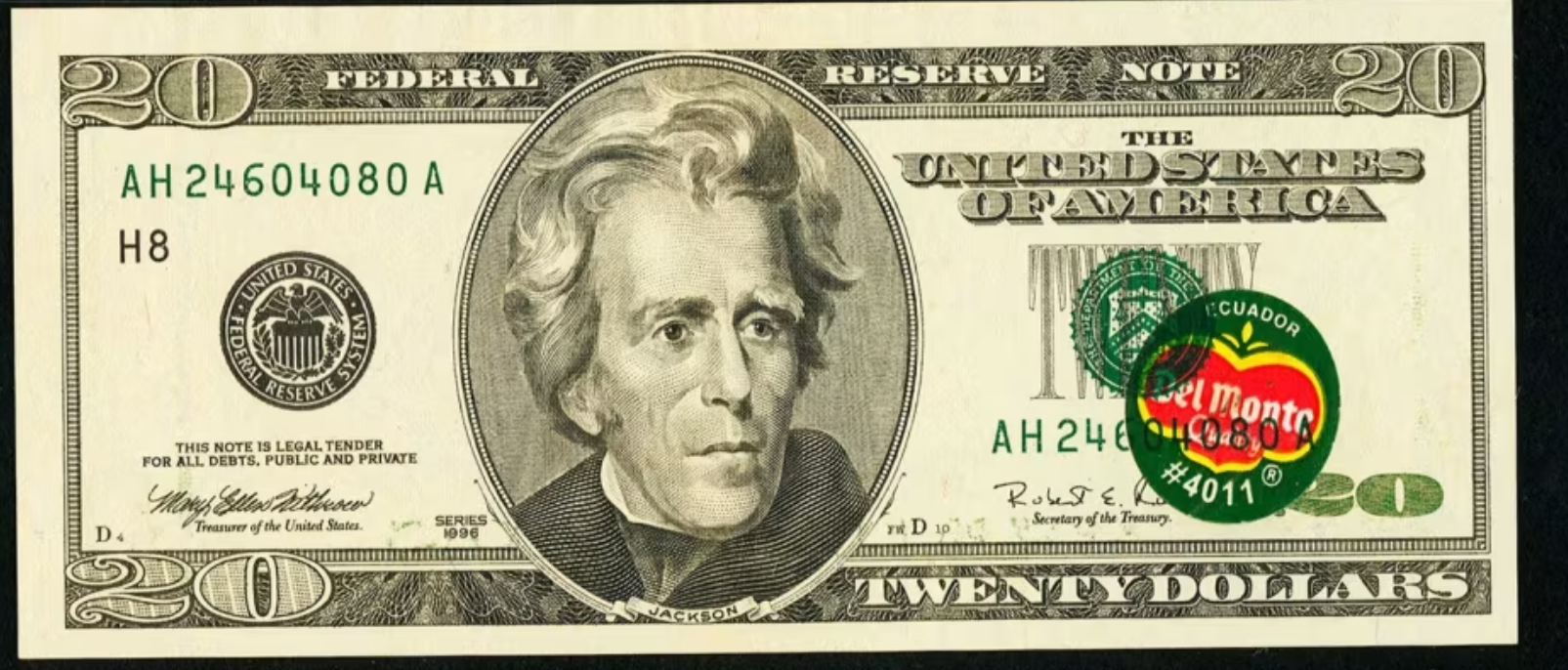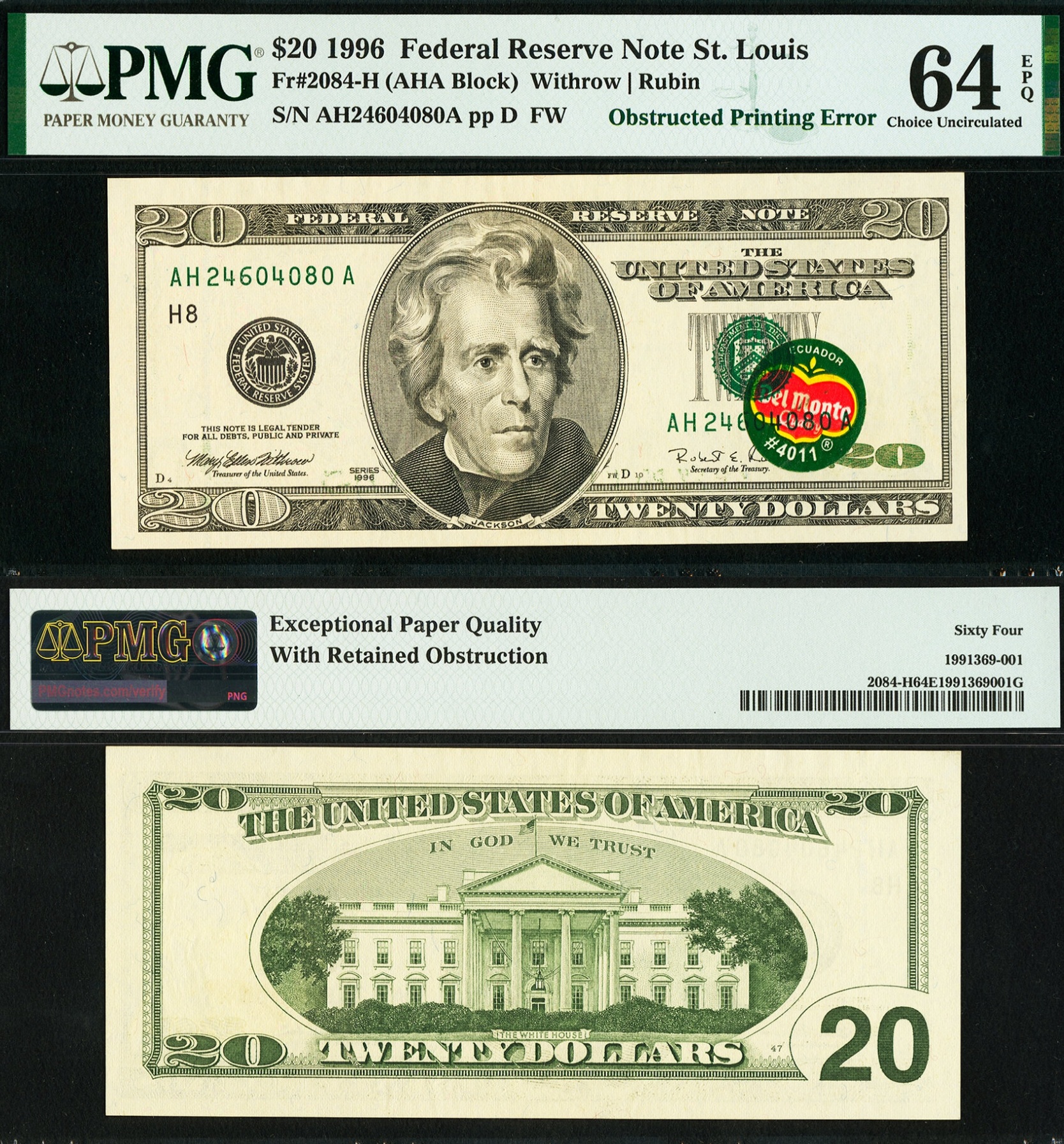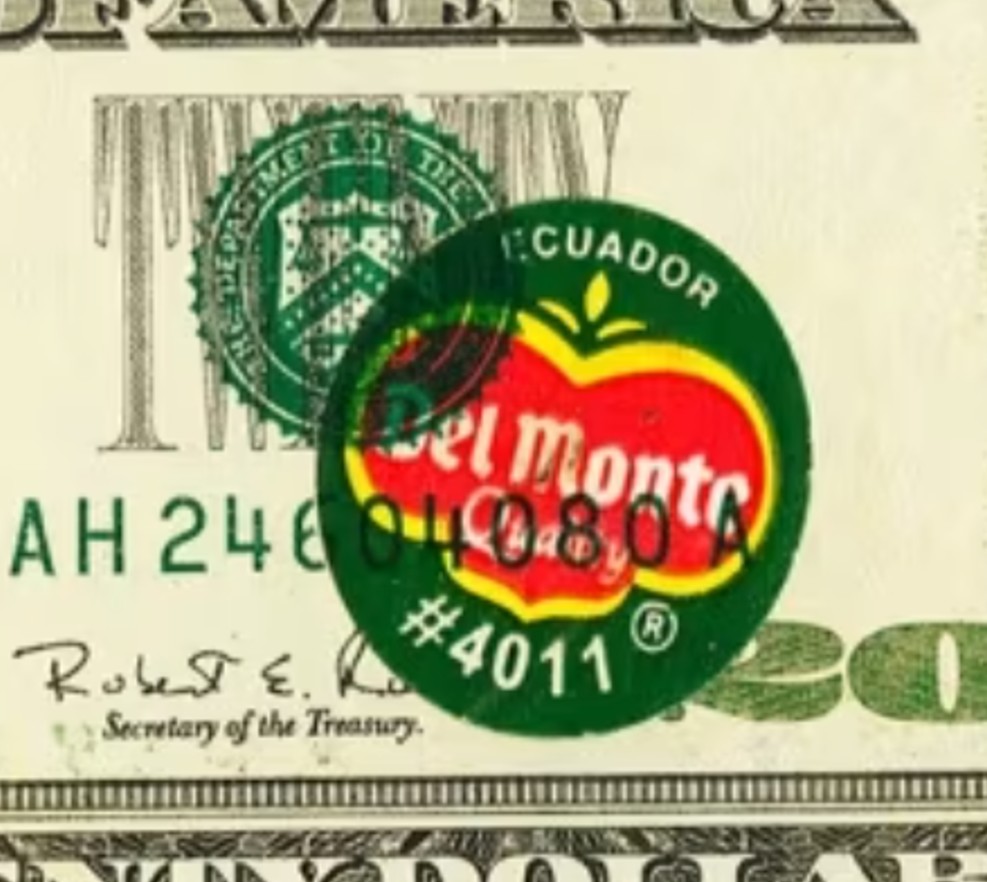Collection
AboutHow a $20 Bill with a Del Monte Sticker Became a $396,000 Myth

In 2004, collectors heard a story that sounded almost too good to be true: a college student withdrew a 1996 $20 Federal Reserve Note from an ATM and found a Del Monte banana sticker printed right into it. The green Treasury seal and serial number ran across the sticker — a once-ordinary note turned instant legend. It first sold on eBay for about $10,000, later at Heritage Auctions for $25,000, and in 2021 fetched $396,000. PMG graded it “Obstructed Printing Error with Retained Obstruction, Choice Uncirculated 64 EPQ.”
Those numbers are real, but the fairy-tale origin isn’t. The note and the sticker are genuine — yet no verified record exists of the “student” or the “ATM.” The Bureau of Engraving and Printing (BEP) never explained how a bright fruit label entered a secure pressroom or why the contaminated sheet was not destroyed.

The BEP’s workflow makes the mystery impossible to ignore. Backs are printed first, then faces, and finally the green serial numbers and Treasury seals. Anything lying beneath a seal existed before that last pass. The Del Monte sticker sits under both — proof it was on the sheet inside the plant.
Two possibilities exist. One: accidental contamination — a stray label dropped during production. Standard protocol would have required pulling and shredding that sheet. Two: deliberate placement — an insider positioning the sticker before the overprint to create a textbook “retained obstruction.” The latter fits the evidence far better.

The “found in an ATM” story worked like an insurance policy. Once described as discovered in circulation, the event moved outside BEP jurisdiction and no internal audit was required. Media coverage from PMG and background references via the Bureau of Engraving and Printing are among the few official sources still accessible. Most secondary press versions have since disappeared, leaving the legend to stand on its own.

Physically, the note is almost too perfect. The sticker sits in the upper-right corner, directly beneath the Treasury seal — the most dramatic and commercially convenient location possible. If you wanted to engineer a showpiece, that’s exactly where you’d put it.
None of this diminishes the note’s physical authenticity; it simply separates fact from fiction. The Del Monte $20 is genuine U.S. currency with a genuine sticker printed through. What’s doubtful is the story that allowed it to leave the BEP unchallenged. A proper investigation would have checked shift rosters, spoilage logs, and uncut-sheet handling — yet none has ever been released.
The lesson is bigger than one banana sticker. When the market rewards a cinematic tale more than a plausible production path, it invites more engineered “miracles.” The object is authentic; the legend was crafted.
This article analyzes a public narrative and compares it with BEP-published printing procedures. It accuses no individual of wrongdoing. Readers should distinguish between the note’s verified physical features and the unverified origin story that made it famous.